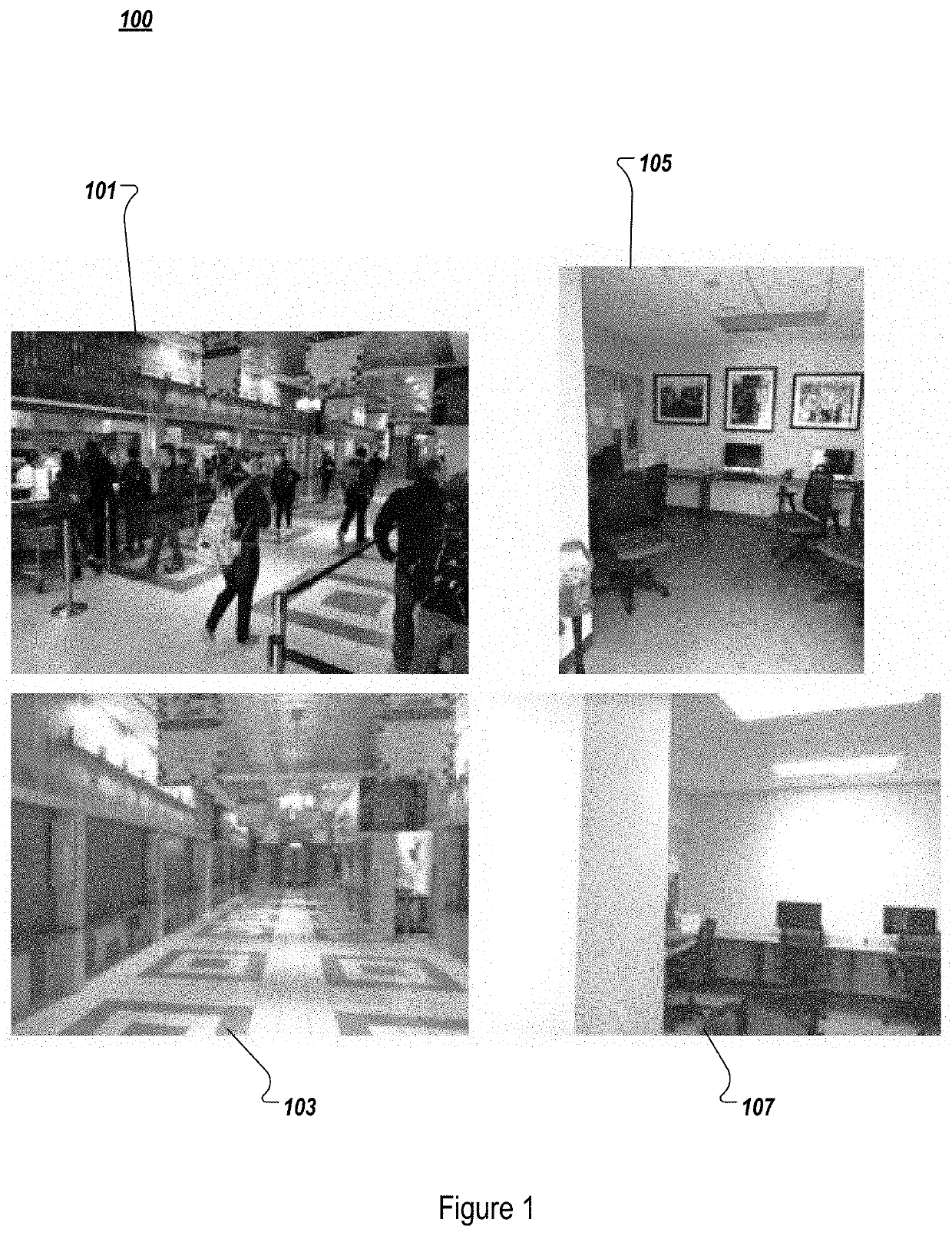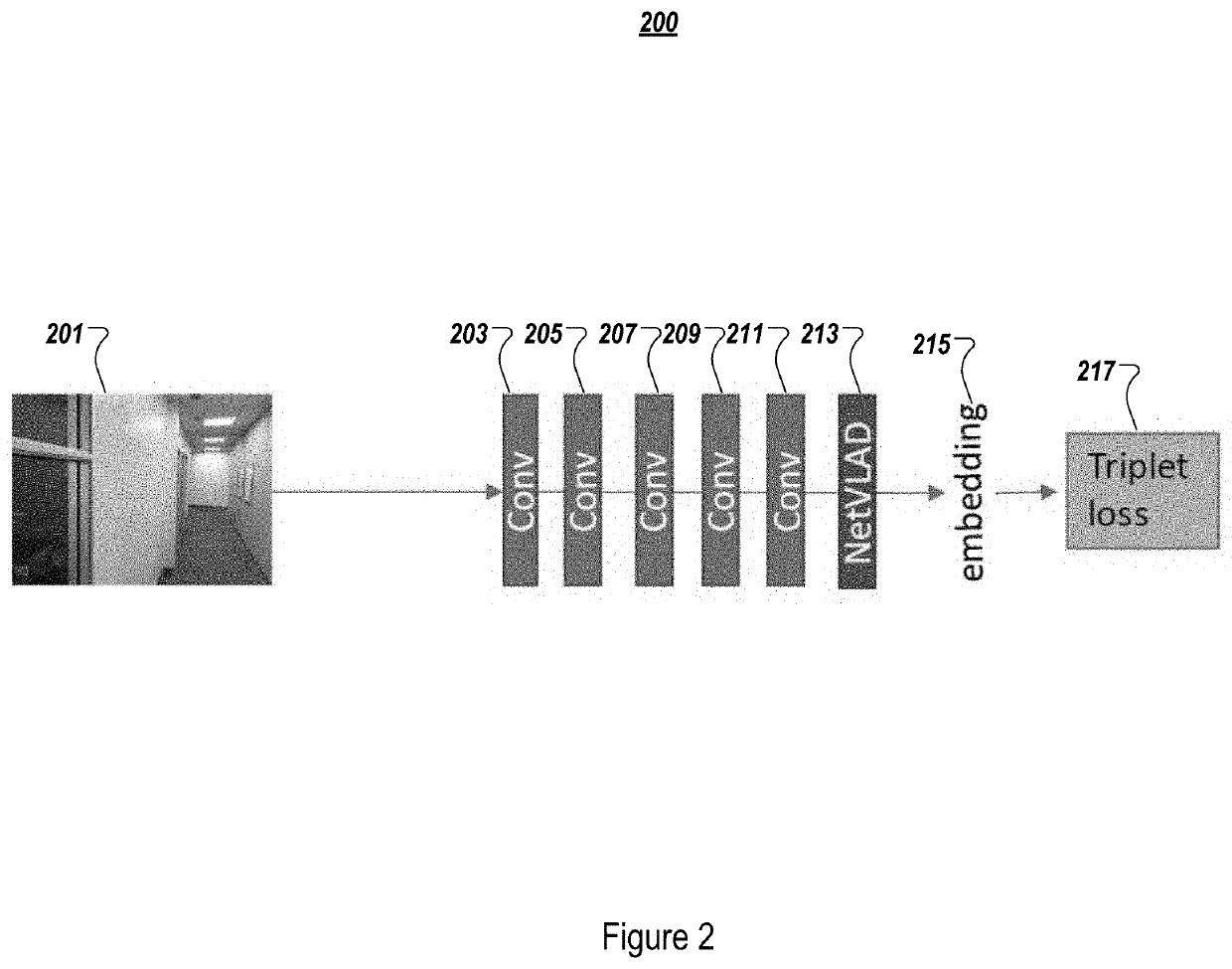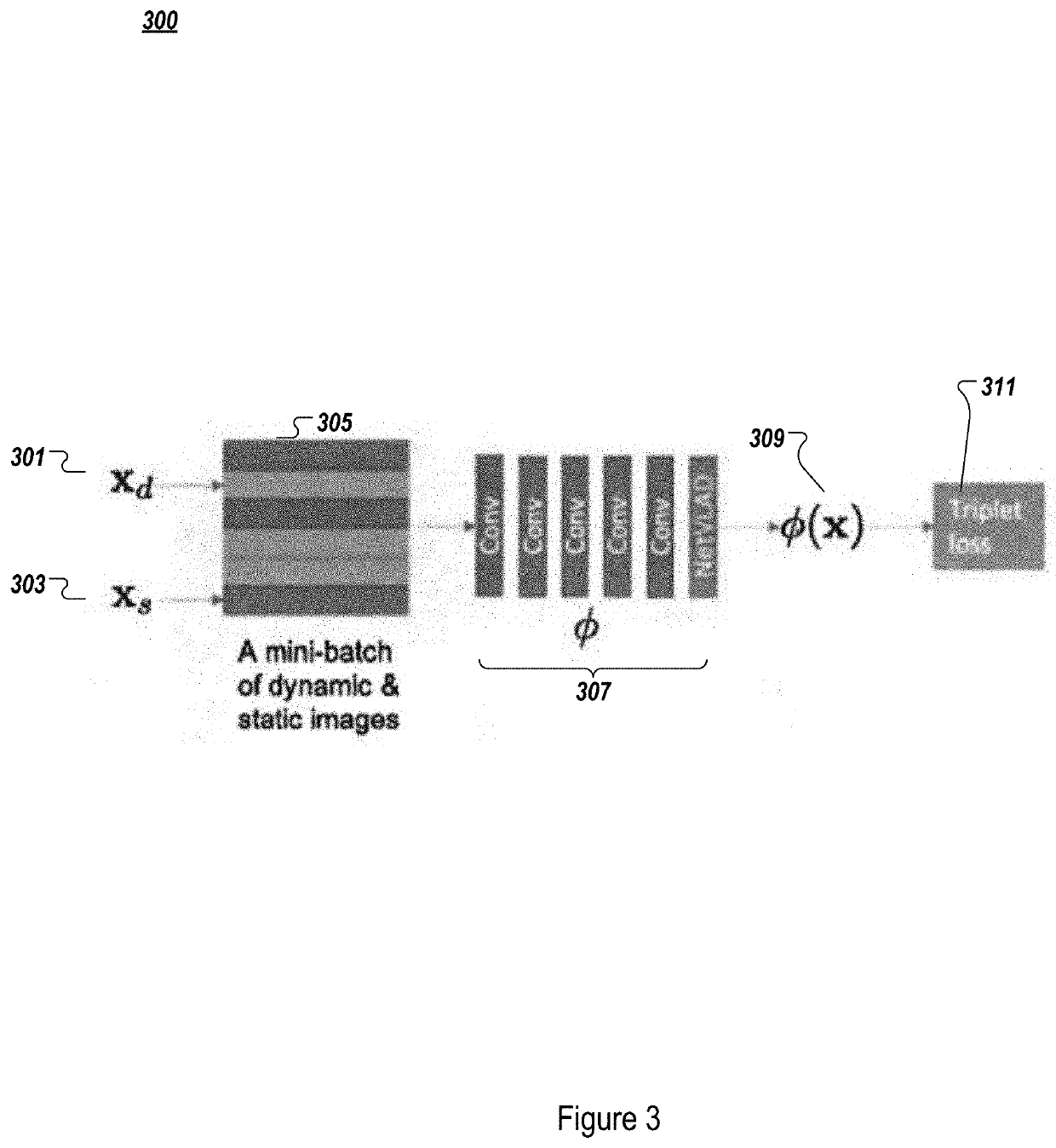Indoor localization using real-time context fusion of visual information from static and dynamic cameras
a technology of applied in the field of indoor localization using real-time context fusion of visual information from static and dynamic cameras, can solve the problems of limited function usefulness of related art approaches such as gps, and inability to provide sufficient information for art approaches such as global positioning systems or other navigational tools
- Summary
- Abstract
- Description
- Claims
- Application Information
AI Technical Summary
Benefits of technology
Problems solved by technology
Method used
Image
Examples
Embodiment Construction
[0030]The following detailed description provides further details of the figures and example implementations of the present application. Reference numerals and descriptions of redundant elements between figures are omitted for clarity. Terms used throughout the description are provided as examples and are not intended to be limiting.
[0031]Aspects of the example implementations are directed to providing visualization information for indoor localization, based on static images captured by sensing devices such as surveillance cameras, augmented with dynamic information, provided by images from user devices, such as smart devices or the like, while learning the real time contextual information, so as to deliver the accurate localization. For example, but not by way of limitation, the example implementations may provide one or more users with discrete location information, for environments having unpredictable and unstructured changes, which can be used for navigation and / or localization...
PUM
 Login to View More
Login to View More Abstract
Description
Claims
Application Information
 Login to View More
Login to View More - R&D
- Intellectual Property
- Life Sciences
- Materials
- Tech Scout
- Unparalleled Data Quality
- Higher Quality Content
- 60% Fewer Hallucinations
Browse by: Latest US Patents, China's latest patents, Technical Efficacy Thesaurus, Application Domain, Technology Topic, Popular Technical Reports.
© 2025 PatSnap. All rights reserved.Legal|Privacy policy|Modern Slavery Act Transparency Statement|Sitemap|About US| Contact US: help@patsnap.com



